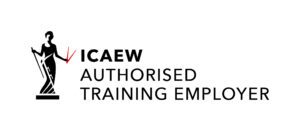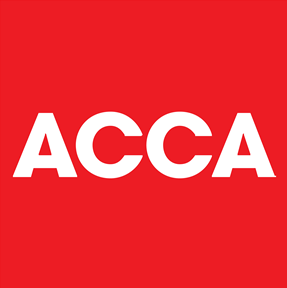Furlough: Final month
Table of Contents
- How to best use the final month of furlough to plan for the future?
- Half of aviation and tourism staff still on furlough
- The latest coronavirus job retention scheme (CJRS) figures show that 58% of passenger air transport and 49% of travel agency staff were still on furlough at the end of June
When will furlough scheme going to end?
The furlough scheme ends on 30 September, and employers have until 14 October to claim wages for staff who have been put on furlough during that month. Under the initiative, the government will pay up to £1,875 per furloughed employee to cover 60% of their wages throughout September, with employers required to contribute 20% of the employee’s wages, and having the option of contributing more.
How to best use the final month of furlough to plan for the future?
Insolvency and restructuring trade body R3 is urging directors of Covid-hit businesses to use the final month of the government’s furlough scheme to plan for the future and address any financial issues they face
Company directors should use this time to review their business’s financial position and to seek advice about the options open to them if they are experiencing any financial issues.
Businesses have another 30 days where government will underwrite a large percentage of their wage bill. Directors need to use this time wisely, explore their options for resolving any issues they face, and develop a plan for how they’ll address them.
Anyone who notices indicators that their firm is in financial difficulties – such as difficulty paying employees, inability to pay suppliers on time, or cash flow challenges – should get help from a reputable source before the problem gets out of hand.
Talking to someone about the problems your business faces at an early stage means you have more potential solutions open to you and more time to take a decision about how you move forward. It’s very hard to have that conversation, but starting it early generally leads to much better outcomes for you and your business than if you put it off.
The pandemic has disrupted trading for nearly a year and a half, forced around 1.6m businesses to borrow more than £79bn from the government and, at the peak of the pandemic, furlough nearly nine million staff. The scheme has undoubtedly saved tens of thousands of businesses and jobs.
We know there are a large number of company directors who are worried about the future – especially with the furlough coming to an end and payments due on the loans the government made available.
What are the common signs of financial distress?
A typical sign of financial distress is where a company is lengthening its creditor days (ie, the number of days it takes to pay suppliers from the date the payment is due). This is often a sign of cashflow issues, and may indicate that the company will become increasingly less able to pay its debts as they fall due. Other signs that a business does not have sufficient cash or working capital to pay debts as they fall due include:
- tax debts: failure to pay tax liabilities such as National Insurance, PAYE, and/or VAT can often be a key element in losing control of company finances. HMRC can sometimes end up being a large creditor in failing businesses with numerous debts to recoup;
- Pension deductions: failure to pay pension deductions from employee wages to a pension provider.
- Cancelling staff bonuses: failure to pay bonuses may be a sign that finances are on the decline.
- lack of investment: failure to invest in new technology, people or marketing, or essential repairs not being undertaken to buildings or machinery.
- directors’ remuneration: the directors not being able to draw an income from the business can be a sign of financial distress.
- stock levels: an increase in stock levels may be an early indication that incoming orders are reducing. This can be a clear sign that a company’s financial position is deteriorating.
- an increase in stress: a company in distress usually results in increased stress for its directors and management.
Half of aviation and tourism staff still on furlough
Overall, at the end of June 2021, 1.9m people from 540,000 different employers are still on the government’s furlough scheme. This is a decrease from 590,000 people from 31 May where there were 2.4m people still on the scheme.
Other industries with high numbers of furloughed workers include photography activities 39%, arts and entertainment 34%, clothing manufacturing 30%, conventions and trade exhibitions 29%, and retail 25%
The aviation and travel sectors in particular are still severely disrupted by Covid-19 restrictions, with many people opting for domestic holidays instead of international trips due to worries about countries being added to the red or amber list with little notice, which could require them to quarantine on arrival in the UK.
British Airways noted in a memo earlier this week that their decreased flying schedule did not ‘line up’ with operating expenditures such as payroll. The document stated that when the furlough programme is eliminated on September 30, British Airway’s pay costs will “steeply increase,” and that “any increase is terrible news.”
A spokesperson for British Airways said: ‘Along with the rest of the aviation industry – one of the only sectors that continues to be disrupted by the pandemic – we want the government to continue to protect jobs and maintain skills beyond September.
‘We also want to welcome colleagues and more customers back as soon as possible so we are urging the government to add more low-risk countries to the green list and allow vaccinated customers to travel without restrictions from green and amber countries.’
With the scheme set to end at the end of this month, many groups have called on the government to extend the scheme.
The plea comes as unions and industry lobby groups prepare for a spike in redundancies as employers, many of them struggling to cope with the impact of the Delta variant, prepare to take back staff on the scheme.
The government has announced that businesses must notify the government if they are going to make between 20 to 99 staff redundant.
In a report released today the Institute for Public Policy Research (IPPR) states that the UK must invest more and ‘keep and tweak’ furlough scheme until the economy passes pre-pandemic levels.
The IPPR’s report showed that at the end of July, government data showed 1.9m workers were still furloughed and 200,000 were noted as economically inactive, suggesting more than 2m face an uncertain future in October.
Claire Bennison, head of ACCA UK: ‘The furlough scheme has been a lifeline for many. A sharp stop may be a shock to employers and employees, so this needs to be avoided as far as possible and we’d agree with business calls to extend it. A phased wind down over six months, would be beneficial.
Chancellor Rishi Sunak has consistently rejected calls for an extension, telling MPs who are concerned about a rise in unemployment that the government must end subsidies to reduce spiralling public debts.
As of July 14, 2021, the overall cost of the coronavirus job retention scheme (CJRS) was 67.4bn. At the end of March 2021, the estimated cost of the government’s response to the Covid-19 pandemic had risen to £372bn according to a report by the National Audit Office (NAO).

Our service to you
If you are a self employed, business owner/director of company looking to get your accountancy and taxation matters sorted, look no further. We, at Naail & Co, are pro-active and easily accessible accountants and tax advisors, who will not only ensure that all your filing obligations are up to date with Companies House and HMRC, but also you do not pay a penny more in taxes than you have to. We work on a fixed fee basis and provide same day response to all your phone and email enquiries. We will also allocate a designated accounts manager who would have better understanding of your and business financial and taxation affairs. Book a free consultation call using the link below.
Related Blogs:
Get further information from the following blogs;
PAYE will be payable by direct debit to HMRC
PAYE tax avoidance promoters – Named & shamed
NI Threshold changes from 6 July 2022
Statutory sick pay rebate scheme reinstated
Covid support measures come to an end
Businesses pay back £1.3 billion of furlough
Tax free earnings for teenagers capped at £1,000
Employers named and shamed for paying less than minimum wage
Turnover calculation added to 5th self employed grant
Furlough & Grant Fraud: HMRC taskforce to recover £1bn
Furlough support if your deadline is missed
Furlough & SEISS Grant- Report & results
Subscribe to our newsletter
BUSINESS HOURS
Monday – Friday
- 9:00 am – 5:30 pm
Pages:
Menu








